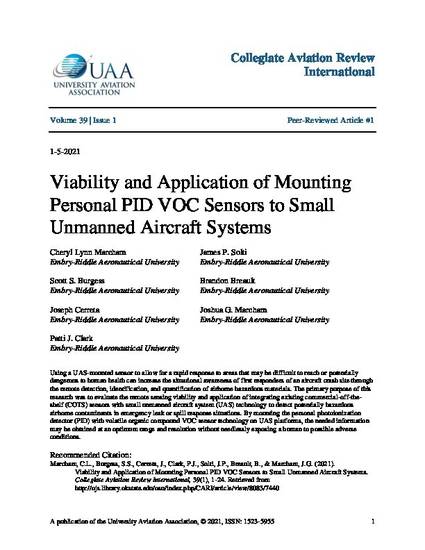
Using a UAS-mounted sensor to allow for a rapid response to areas that may be difficult to reach or potentially dangerous to human health can increase the situational awareness of first responders of an aircraft crash site through the remote detection, identification, and quantification of airborne hazardous materials. The primary purpose of this research was to evaluate the remote sensing viability and application of integrating existing commercial-off-the-shelf (COTS) sensors with small unmanned aircraft system (UAS) technology to detect potentially hazardous airborne contaminants in emergency leak or spill response situations. By mounting the personal photoionization detector (PID) with volatile organic compound VOC sensor technology on UAS platforms, the needed information may be obtained at an optimum range and resolution without needlessly exposing a human to possible adverse conditions.
Available at: http://works.bepress.com/Cheryl_Marcham/38/
